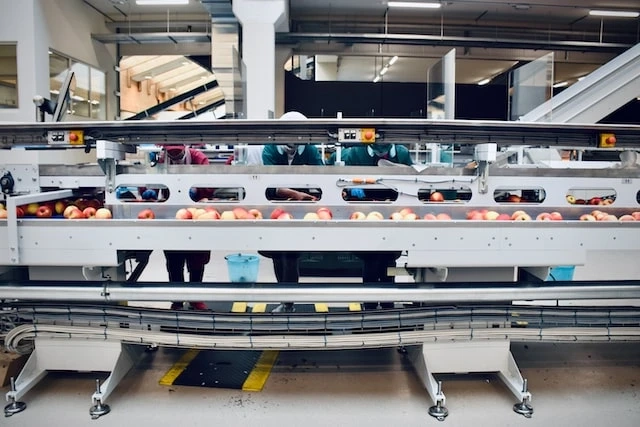Having a proper way of handling materials can increase your organizational efficiency by quite a margin. First, you get to move the material from point A to point B in as little time as possible. Second, you improve your warehouse efficiency, which leads to a surge in profit and sizable growth in your warehouse business’ reputation. Then, there’s the issue of reduced safety, a lower chance that you’ll face expensive employee compensation, and a chance to avoid unnecessary sick leave.
Achieving all of this is how one would describe successful material handling, however, what are the methods through which all of this is achieved? Here are the top five things you need to understand when it comes to successful material handling.
1. Benefits of Efficient Material Handling
Before we start discussing the peculiarities and particular tasks involved in material handling, it’s essential that you understand all the benefits of material handling. By improving your material handling practices you get:
Higher employee adaptabilityHigher cost-savingBetter utilization of free spaceHigher on-site safetyKeep in mind that the use of sophisticated methods and equipment pieces also comes with logistical trouble of its own. Namely, the introduction of additional tools implies an expansion of your training program.
2. Types of material handling
Right off the bat, it’s more than clear that manual material handling and automated material handling are not one and the same thing. When it comes to the manual type, the worker personally moves containers. However, this doesn’t have to be without the assistance of various types of machinery and materials handling equipment. The use of this equipment reduces potential harm to the worker, increases efficiency, etc. Still, it requires active work from members of the warehouse staff.
Automated handling, on the other hand, means using machine programming to handle most of the tasks. The use of sensors, robotics, and programmable equipment ensures that the materials-handling staff has more supervisory work than anything else. According to experts behind Belle Banne Conveyor Products, automating material handling with conveyors does more than just save labor, it also minimizes a chance of an injury.
As you can see, there’s a lot of misinterpretation regarding these two basic types, as well. After all, manual doesn’t mean that a worker cannot use a forklift, while automated usually means semi-automated.
3. Its place in the supply chain
One thing about material handling is that it’s not a standalone phenomenon. On its own, it has no value but when it comes to the way it complements the supply chain, it becomes completely indispensable. A product lifecycle is somewhere along these lines:
ManufacturingTransportationStorageDistributionNeedless to say, materials handling is essential during every single one of these stages. This makes it essential for a business that has a part in any of these stages. Therefore, it’s one of the key aspects worth paying attention to. Also, remember that specialization makes a world of difference. For instance, freight forwarding is completely different from across-the-warehouse material moving, even though they can both be categorized as cargo transportation.
4. More than just transportation
When talking about materials handling, the majority of people think about transportation. Therefore, they focus on equipment like handcarts, trolleys, forklifts, etc. Still, the storage of equipment is also a part of its handling, which is why racks, stacking frames, and shelves are just as essential in this task.
Keep in mind that the storage of a certain material determines what kind of equipment will be used to retrieve it from there. For instance, something placed on a top shelf will require a scissor lift, or at least a ladder, to reach. While stacking vertically helps with the utilization of storage space, it complicates the situation with the equipment.
5. Bulk handling
Another misconception about materials handling comes from the idea that all the materials come in crates or containers. At the very least, it’s expected that the materials in question are stacked upon a pallet. This is definitely not the case when it comes to the bulk-handling of equipment.
Take, for instance, grain handling. Grain doesn’t go into a warehouse but in a silo, which also means that the entire transportation infrastructure must differ, as well. So, instead of forklifts and trolleys, you need to rely on grain elevators, bucket elevators, hoppers, reclaimers, etc.
In other words, the concept of successful material handling completely changes, or, at least, the tools that are used to achieve it. Everything else changes, as well, ranging from the organization of labor, all the way to safety practices.
6. Cross-docking
The last thing we should discuss is the concept of cross-docking and the incredible logistical support needed to achieve it. Now, this concept involves the minimal use of storage space but it requires an insane amount of organizational efficiency. It involves moving items from one truck to another, so that they can, for instance, be delivered from the manufacturer to the retailer without the need for permanent storage in between. This way, the place where the cross-docking is performed serves as a transit station rather than an actual storage space.
In conclusion
The last thing worth taking into consideration is the fact that efficiency and safety have to be of the utmost importance. By using your tools more effectively, you get a much better chance of achieving these two objectives. However, you need to understand that material handling means more than just transporting these containers and using the right equipment to do so. It’s about the organization, storage, and business infrastructure, as well.
0


